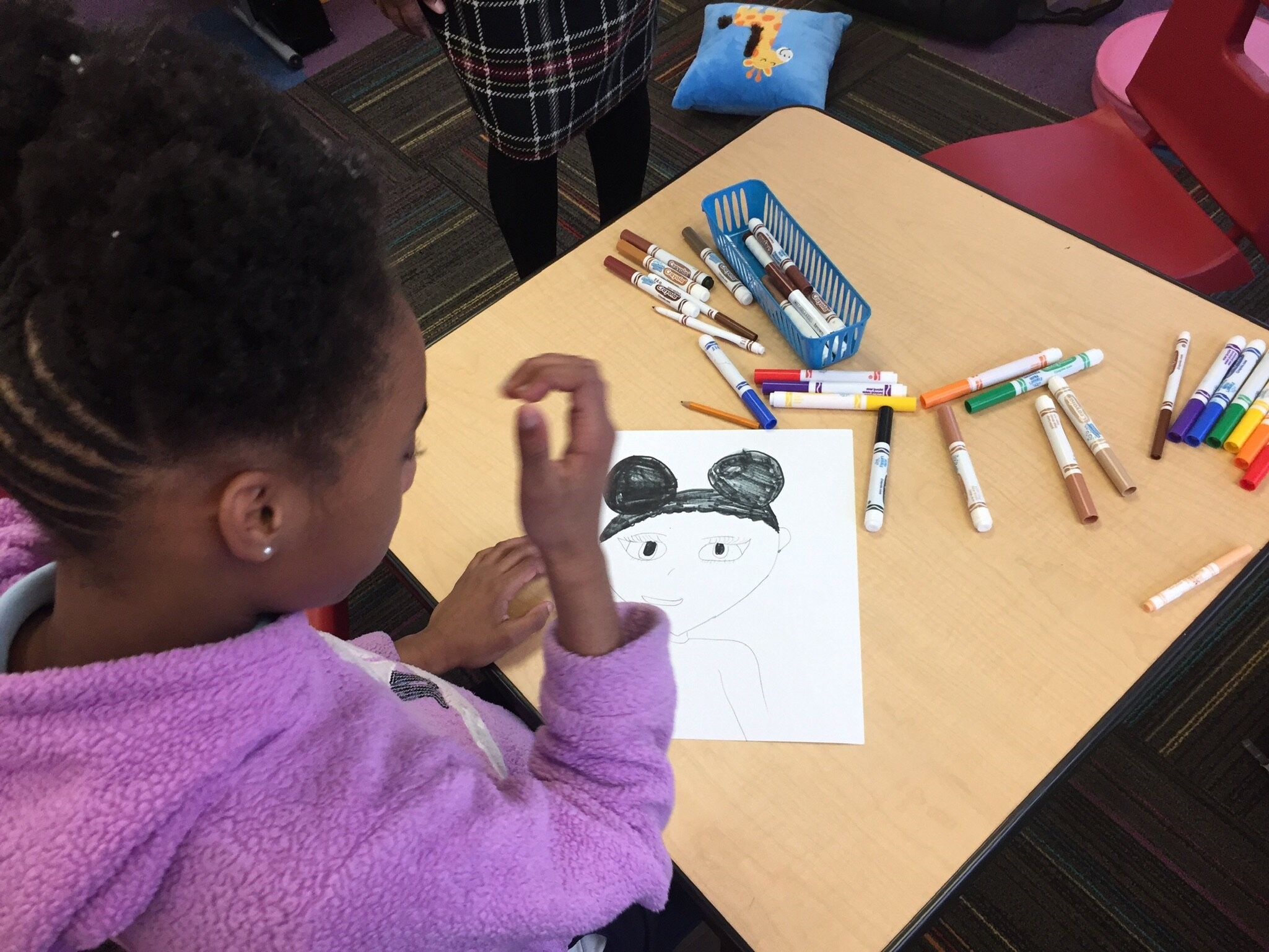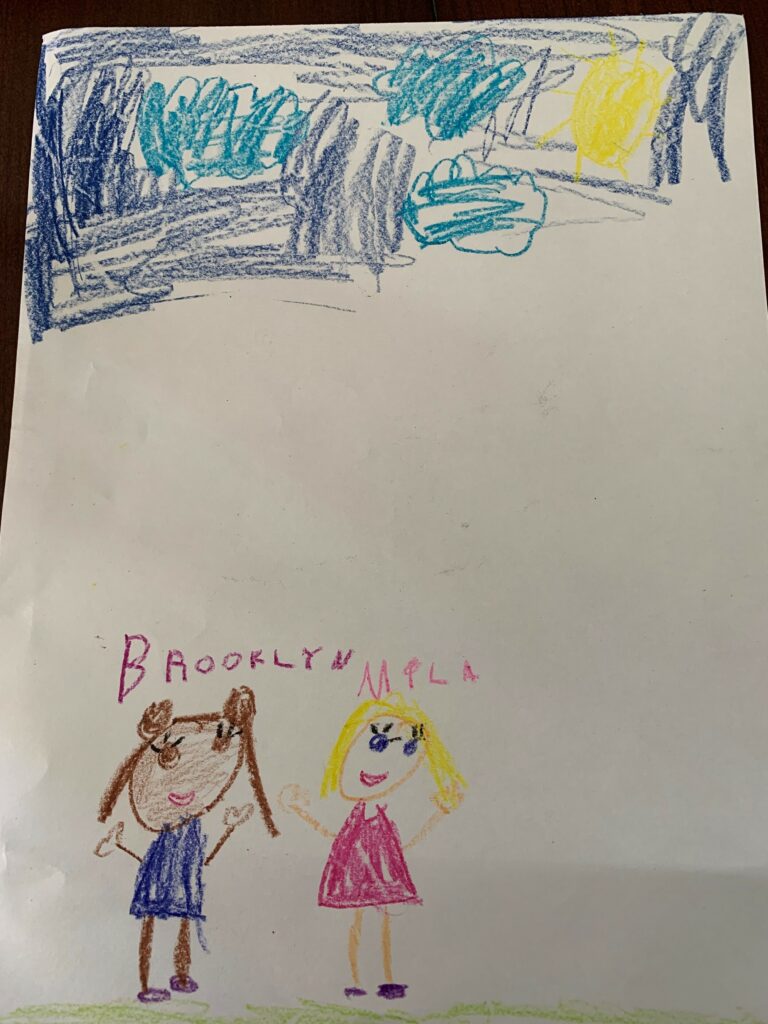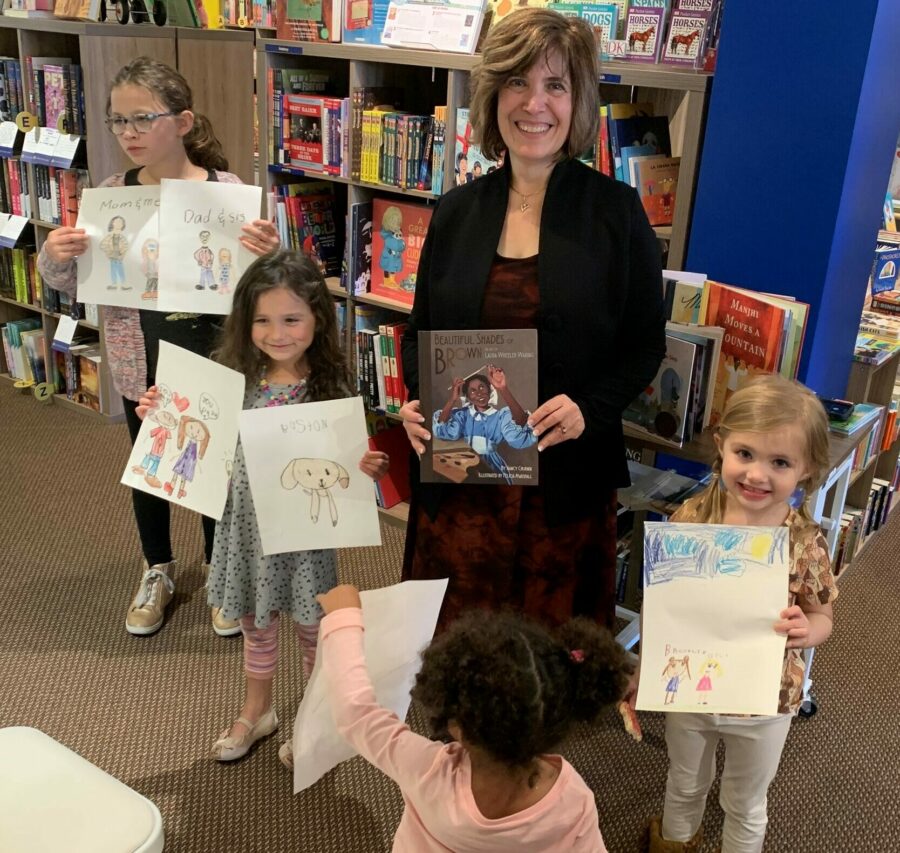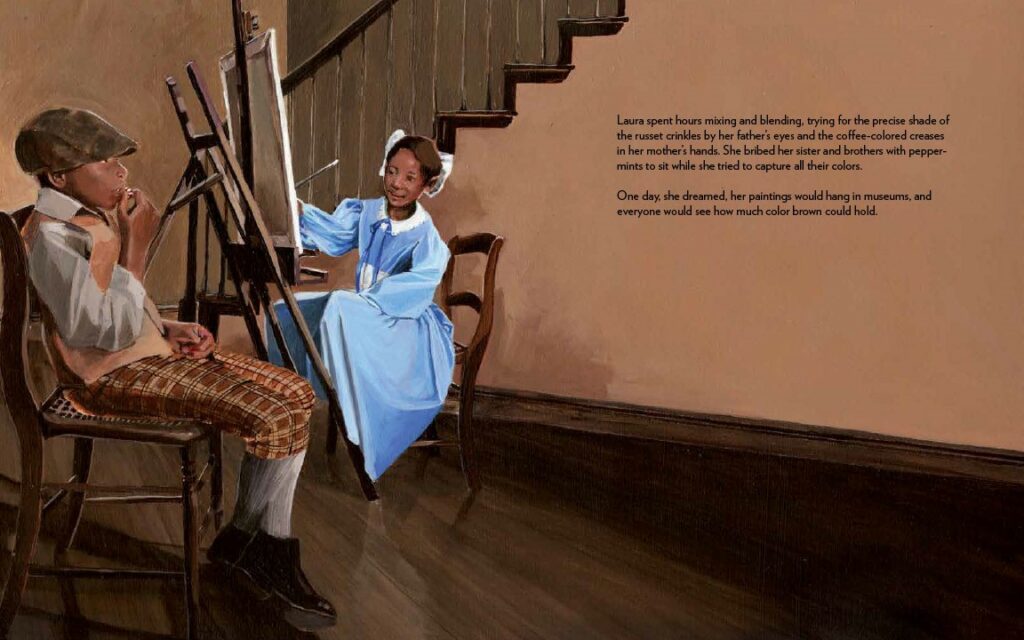
GUEST BLOGGER NANCY CHURNIN
In BEAUTIFUL SHADES OF BROWN, THE ART OF LAURA WHEELER WARING (Creston Books, 2020), you’ll learn how Ms. Waring loved the diversity within the color brown. She had a passion for capturing the exact shade of the skin of the subjects she painted. At a time of segregation, when people in America made generalizations about different racial groups, she wanted to honor the unique beauty of each person within a group and remind people that each person is an individual and should be treated with dignity and respect.
Activity #1: Primary and secondary colors
Most of the colors we know and love best are actually mixtures of other colors. Begin by discussing the concept of primary colors and secondary colors. Explain how you can mix primary colors like blue and yellow into a secondary color of green. Or how you can mix primary colors of red and yellow into a secondary color of orange.
Pour primary colors onto a paper plate or palette. Supply students with paper, paintbrushes and cups of water to clean their brushes between mixing. Have the students mix primary colors to make secondary colors. Have them start a notebook where they write down and share what colors they mixed to make which new colors as if they were writing recipes. Put a sample of the color they created next to the recipe for that color. Older students can actually measure how much of each color they mixed.
Activity #2: Pre-reading
Point out that the color brown in the crayon box or paintbox is just one of many shades of the color we call brown. Each shade is as different as the colors you mix into it.
Read BEAUTIFUL SHADES OF BROWN with students or have them read it on their own. While Ms. Waring’s focus was on painting people in the Black community, you can apply the principle of beautiful shades to all skin colors in all groups.

in Winnsboro, Texas created this art project
inspired by Beautiful Shades of Brown

Activity #3: Matching skin colors
Divide students into groups of three to six members and ask them to share a palette of paint colors. Give them each a paintbrush and paper. All groups receive the same instructions:
- Find the color on your paint palette that is the closest to your skin color.
- Paint a series of thick circles of that color on paper. Hold your finger next to the paint, comparing the color. Try mixing different colors from the palette into the brown to try to find your exact shade. Write down what colors you are adding so that you will be able to reproduce that shade you’ve created. (Note: Studentes don’t necessarily have to quantify the amount of each color. They can approximate a dab, a medium amount, a large amount.)
- Add the recipe for the shades you create next to a sample of those shades in your notebook.
Then, ask students to:
- Compare and contrast their different shades and the colors that were used to achieve their color.
- Collaborate to get the colors closer to matching skin color.
- Look up words for each shade and see which ones best describe each shade. For instance, in Beautiful Shades of Brown, many different words for brown shades are used, including chocolate, caramel, chestnut, russet, coffee, ebony, smoky, sorrel.

painting for the Paint Your World project,
creating art that reflects themselves and their friends
Activity #4: New shades of favorite colors
Ask kids to name and write down their favorite colors. Now challenge them to make a palette of several shades for those colors by mixing that favorite color with other colors. Ask them to come up with names for each shade. Some of those names for shades may already exist. They can also make up names for different shades of green, red, yellow, blue, purple or whatever colors they choose.
Activity #5: Advertise a product in different shades of a favorite color
Have each child come up with an advertisement for a favorite product. Have them show the product in different shades that they’ve created of their favorite color. Make sure that they have included the “recipe” for that shade in their notes. Include the names for the different shades, which can include names they’ve made up. For example, they can say, “Now available in…”
Have them present their advertisements to the class. Allow the class to vote on favorite shades of the products. When a shade wins, let the student who created that shade share the color “recipe” .
Bonus
If the class agrees on a favorite shade, or if they want to alternate on their favorite shades, have them make a flag or poster for class using that shade with their class name on it. If the shade is one they’ve invented, include the name of the invented shade on the flag or poster.
Nancy Churnin writes award-winning books about people who inspire her by making the world a better place and that she hopes will inspire kids to be heroes and heroines, too. She has written 10 picture book biographies that have won the National Jewish Book Award, the South Asia Book Award, the Sydney Taylor Honor, have been named Junior Library Guild and A Mighty Girl selections, earned starred reviews, and more, with more books on their way, each with free teacher guides, resources, and projects. The project for Beautiful Shades of Brown is Paint Your World, asking kids to share their artwork of themselves, their families, and their communities. Nancy would love to celebrate your students’ projects for this and any of her books.
Prior to writing books, Nancy was the theater critic for The Dallas Morning News. She loves to visit schools and libraries to talk with readers. You can book her through www.authorsandmore.com. Nancy lives in Plano, Texas. Connect with Nancy online at:
- www.nancychurnin.com
- on Facebook at Nancy Churnin or Nancy Churnin Children’s Books
- on Twitter and Instagram at @nchurnin











Leave a Reply
Your email is safe with me.